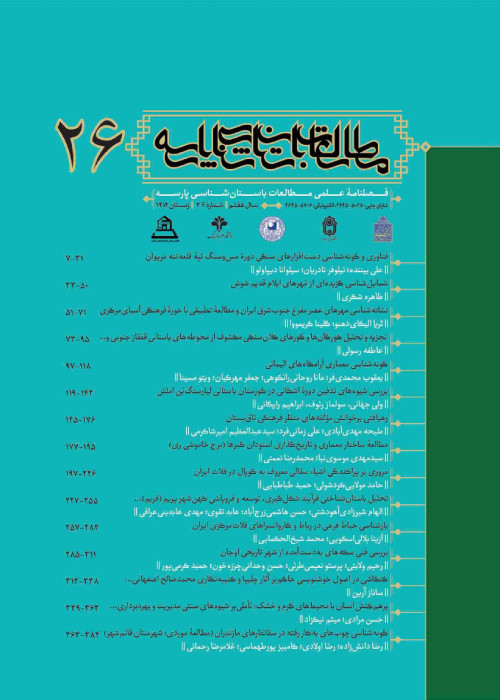The Study of Petrography of the 4th Millennium B.C. Pottery of the Narjuiyeh in Jiroft
The site of Narjuiyeh III is located on the eastern natural mounds of the Narjuiyeh village, from the west overlooking Halil River. Scattering of the fourth millennium BC, especially typical Aliabad type are visible on these mounds. Traces of illegal excavation are also available as pits and holes all over the site. Aliabad ceramics are pottery dating back to the fourth millennium BC (Chalcolithic) in the southeast of the Iranian plateau, first excavated and reported by Caldwell from Aliabad in Bardsir of Kerman, and then have been found and reported from fourth millennium layers of Tell Iblis (Iblis IV) which eventually became known as Aliabad Culture (Caldwell, 1967). Ali-Abad culture potteries (Chalcolithic age) dates back to the 4th millennium BC in southeast of Iran which the distribution of its potteries include the regions of Kerman, Balouchistan and Pakistan. Aliabad pottery in the south-east of the Iranian plateau is one of the most important and prominent pottery types in the Chalcolithic period (Eskandari and Mollasalehi, 2017), which for more detail understanding about this culture in addition to archaeological studies, requires scientific archaeometric analysis and methods; therefore, the aim of the present study is to investigate, study and further understand the fourth millennium BC pottery of Aliabad culture from Jiroft’s Narjuiyeh III site and understanding the expansion of this culture by using structural and technical studies of pottery of this period. At the same time, it has been attempted to use the method of mineralogy (petrography) to get information about how to process the paste, clay type and used temper, conditions, heating and temperature of baking in the furnace, as well as the understanding of the origin of pottery of this area. Archaeological studies show that Aliabad culture in the southeast of the Iranian plateau was the dominant culture of the region in the fourth millennium BC. In this study, it has been attempted to obtain mineralogical information regarding pottery (Aliabad pottery) using library and thin section petrography studies. The polarized binocular microscope JamesSwift made in the United Kingdom at the Petrographic Laboratory of the Institute for Restoration and Conservation was used for microscopic study of the studied pottery.
- حق عضویت دریافتی صرف حمایت از نشریات عضو و نگهداری، تکمیل و توسعه مگیران میشود.
- پرداخت حق اشتراک و دانلود مقالات اجازه بازنشر آن در سایر رسانههای چاپی و دیجیتال را به کاربر نمیدهد.



